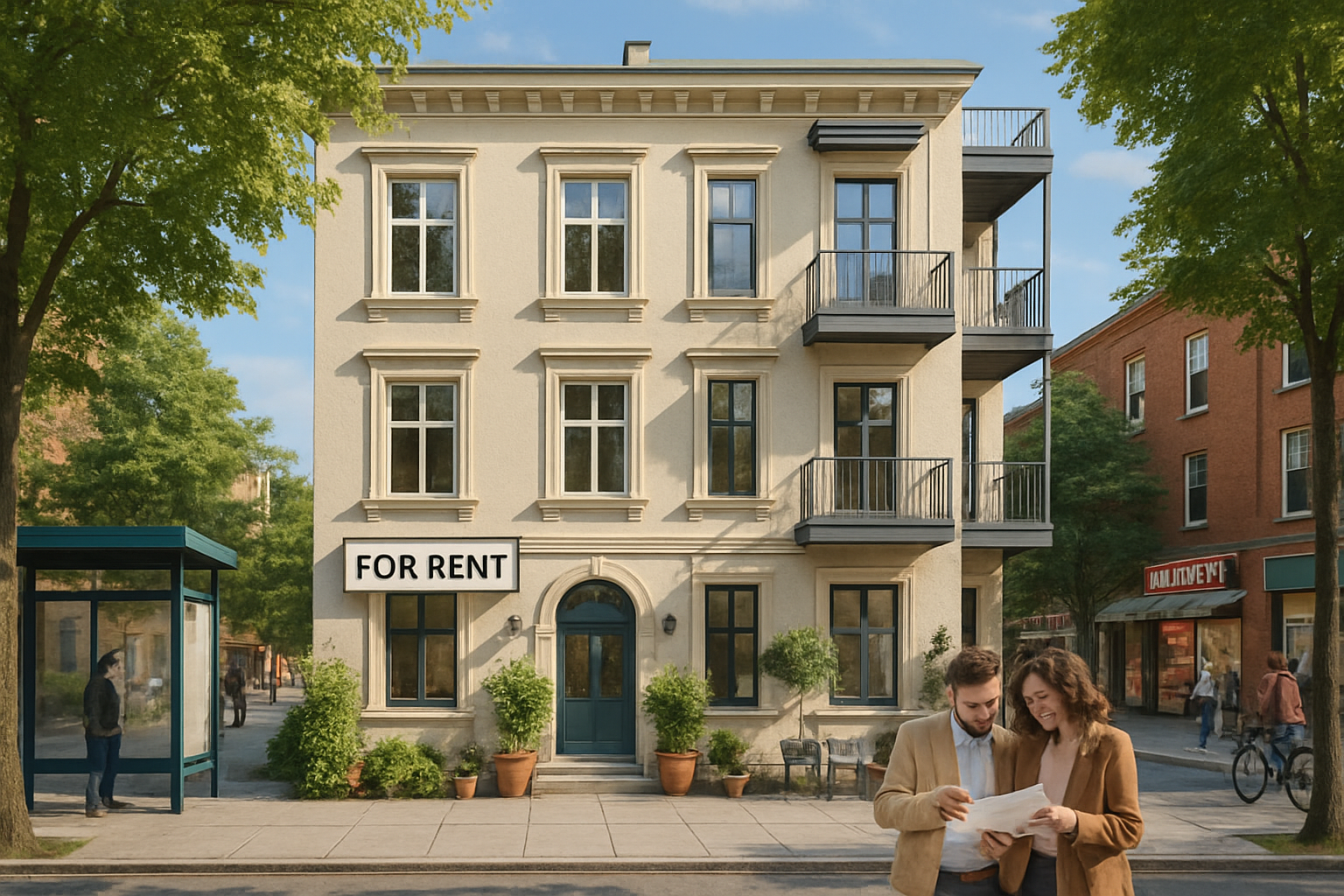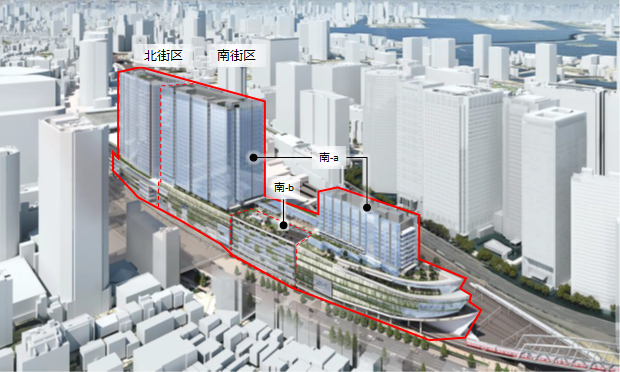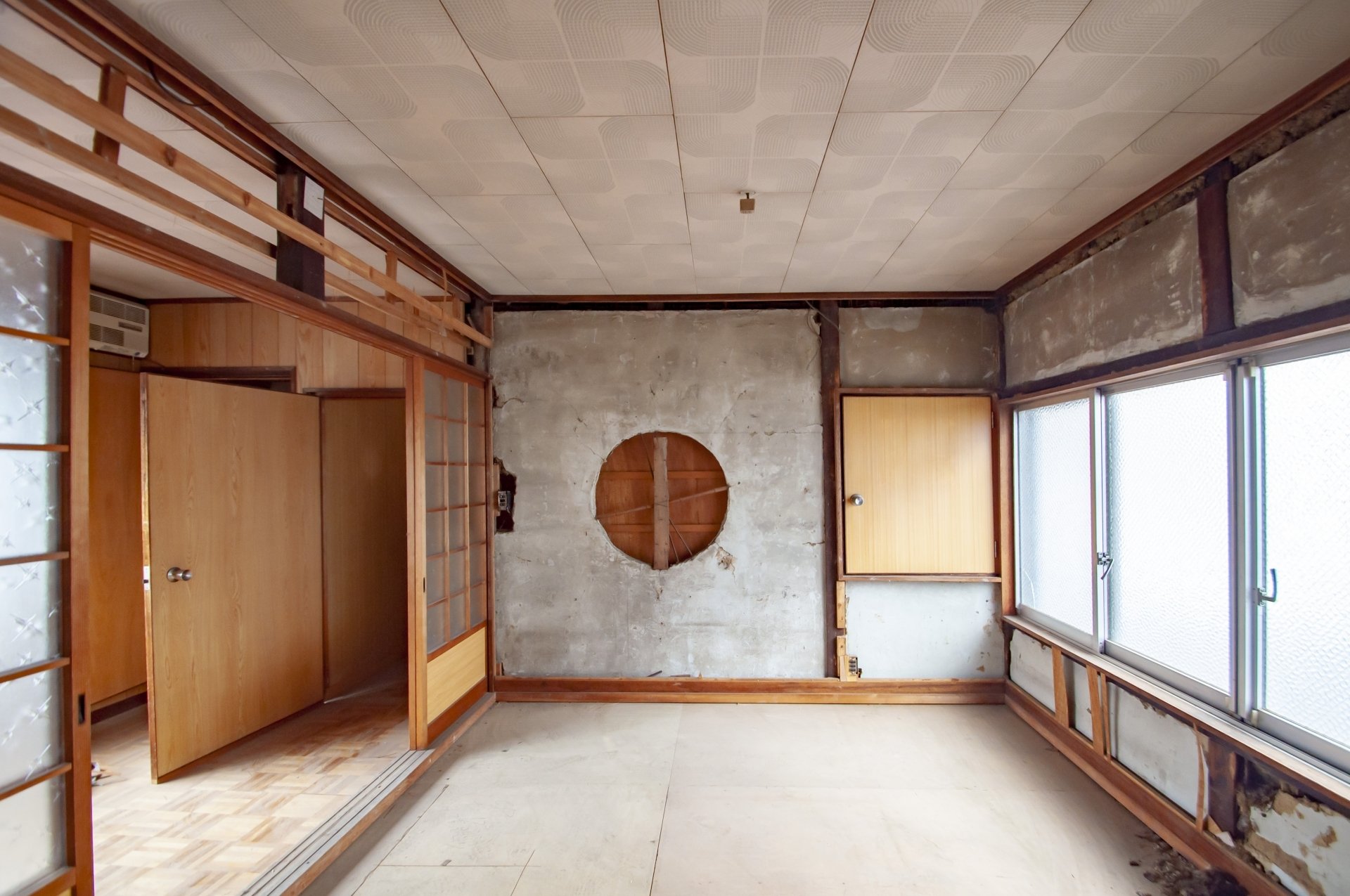When purchasing an air conditioner, many people tend to think that they should choose an air conditioner for a 6-mat room because it is a 6-mat room. However, this selection method is not suitable for today's housing conditions and may result in wasteful use of electricity and reduced comfort.
As a management company, INA&Associates Inc. is involved in many real estate transactions on a daily basis and has a deep understanding of the relationship between housing performance and air conditioning. As a real estate expert, I would like to state that selecting the proper size of air conditioner starts with a proper understanding of the insulation performance and structure of the house.
In this article, we will show you how to select an air conditioner based on evidence that does not rely on a simple tatami-mat number display. With proper selection, you can significantly reduce your annual electricity bill and achieve a comfortable indoor environment throughout the year. This information is also important for those who are considering real estate investment or rental management, from the perspective of improving tenant satisfaction and optimizing operating costs.
The truth shown by the number of tatami mats displayed on air conditioners and the discrepancy between the truth and modern housing
Why standards from 60 years ago are still in use today
The number of tatami mats indicated on air conditioners currently on the market is based on a standard established in 1964. At the time this standard was established, the concept of insulation performance did not exist as it does today, and it was commonplace for homes to be so cold in the winter that even indoors the breath of the occupants turned white.
The following table compares the differences between the housing performance of those days and that of today's homes.
| Item | Housing in the 1960s | Modern high-performance housing |
|---|---|---|
| Insulation | Almost none | High-performance insulation as standard |
| Window glass | Single pane glass | Double glazing glass, triple glazing glass |
| Airtightness (C-value) | No concept of measurement | 1.0 or less is standard |
| Insulation performance (UA value) | No concept of measurement | 0.6 or less is recommended |
| Indoor temperature difference | Difference of 10°C or more is normal | Difference within 2°C throughout the house |
As is clear from this table, housing performance has improved dramatically. However, the standard for indicating the number of tatami mats for air conditioners remains unchanged from 60 years ago and is therefore completely inapplicable to modern homes.
Problems with Tatami-measure Indication in Modern High-Performance Homes
In modern high-performance houses, insulation grade 4 or higher is the standard, and the highest grade, 7, can accommodate four to five times the space indicated by the number of tatami mats. This is because air conditioning is less affected by outside temperatures, and air once heated or cooled can be maintained for a longer period of time.
The following is a rough guide to the number of tatami mats that can be used for air conditioners according to insulation grade.
| Insulation grade | Actual number of tatami mats for 6-mat air conditioners | Actual number of tatami mats for 10-mat air conditioners | Actual number of tatami mats for 14-tatami air conditioners |
|---|---|---|---|
| Grade 4 | 8 to 10 tatami mats | 14 to 16 tatami | 20-22 tatami |
| Grade 5 | 12 to 15 tatami | 20 to 24 tatami | 28 to 32 tatami |
| Grade 6 | 18 to 22 tatami | 30 to 36 tatami | 42-48 tatami |
| Grade 7 | 24 to 30 tatami | 40 to 50 tatami | 56 to 70 tatami |
As this table shows, the conventional tatami-mat indication is not at all helpful for a high-performance house. In fact, selecting an air conditioner according to the number of tatami mats indicated will result in a significant over-specification, causing waste in both initial cost and electricity bill.
Basic Principles for Selecting Air Conditioners by Housing Structure
Difference between a wooden house and a reinforced concrete house
In handling many properties as a real estate specialist, I have realized the impact of housing structure on the efficiency of air conditioners. There are significant differences in air tightness and thermal insulation between wooden houses and reinforced concrete structures.
The thermal conductivity of reinforced concrete is about 10 times that of wood, which means it is less susceptible to outside temperatures. Wooden houses, on the other hand, are difficult to make airtight due to the characteristics of natural materials and require greater heating and cooling capacities.
A comparison of recommended air conditioning capacity by structure is shown below.
| Room Size | Wooden house | Reinforced concrete construction | Capacity difference |
|---|---|---|---|
| 6 tatami mats | 2.5kW | 2.2kW | Approx. 15% increase |
| 8 mats | 2.8kW | 2.5kW | Approx. 12% increase |
| 10 mats | 3.6kW | 2.8kW | Approx. 30% increase |
| 12 mats | 4.0kW | 3.6kW | Approx. 11% increase |
| 14 mats | 5.0kW | 4.0kW | Approx. 25% increase |
As this table shows, wooden houses require air conditioners with 10-30% greater capacity than reinforced concrete houses.
Considerations by Property Type in Real Estate Investment
In the management of rental properties, the choice of air conditioner is an important factor that directly affects tenant satisfaction. In the real estate investment projects I work on, I select air conditioners based on the following criteria.
Criteria for installing air conditioners in rental properties
In one-room apartments for singles (wooden structure), installing an air conditioner one rank higher than the actual number of tatami mats will improve tenant satisfaction and lead to long-term occupancy. In properties for families, installing a 14-mat 200V air conditioner in the living room will ensure comfort for the entire family.
Long-term operating cost perspective
Although the initial investment is slightly higher, selecting an appropriately sized air conditioner will reduce the electric bill burden on tenants and improve the competitiveness of the property. It also extends the life of the air conditioner, thereby reducing the owner's equipment renewal costs.
Understanding the difference between rated capacity and maximum capacity in selecting an air conditioner
Importance of Rated Capacity to Maximize Energy Savings
Air conditioner catalogs list both "rated capacity" and "maximum capacity," and correctly understanding the difference between the two is the key to energy-saving effects.
Rated capacity indicates the capacity at which the air conditioner operates most efficiently, and the best energy-saving performance is achieved when operating within this range. On the other hand, maximum capacity is the maximum capacity that can be temporarily produced, and operation at this state significantly increases power consumption.
To maximize energy savings, it is important to select an air conditioner whose indoor heating and cooling load falls within the range of rated capacity. Selection that relies on maximum capacity will result in constant full-power operation, causing electricity bills to skyrocket.
Economic Effects of Selecting the Right Size
The following are concrete figures showing the economic benefits of selecting the right size air conditioner.
Comparison of Annual Electricity Bill by Capacity
| Air conditioner size | Rated operating hours (per year) | Maximum operating hours (per year) | Annual electricity bill | Difference |
|---|---|---|---|---|
| Appropriate size | 1,800 hours | 200 hours | 45,000 yen | -1,800 hours |
| Too small size | 800 hours | 1,200 hours | 62,000 yen | +17,000 yen |
| Too large size | 1,200 hours | 800 hours | 52,000 yen | +7,000 yen |
As this table shows, selecting the appropriate size can reduce electricity costs by as much as 17,000 yen per year.
Payback period by air conditioner size
| Selection Pattern | Initial cost difference | Annual electricity bill reduction | Payback period |
|---|---|---|---|
| Appropriate size selection | Standard | Criteria | -High-efficiency model selection |
| High-efficiency model selection | +30,000 yen | +8,000 yen | 3.8 years |
| With inverter | +20,000 yen | +12,000 yen | 1.7 years |
From a long-term perspective, selecting a high-efficiency model, even with a slight increase in initial investment, will ensure a solid return on investment.
Scientific-Based Appropriate Size Calculation Method
Four Necessary Factors
To scientifically calculate the appropriate size of an air conditioner, the following four elements are necessary. An accurate understanding of these values will help you select the optimal air conditioner.
1. How to check UA value (thermal insulation performance)
The UA value indicates the average thermal transmittance coefficient of the outer skin, and the smaller the value, the higher the insulation performance. The UA value is indicated in the design documents and performance evaluation report of the house, and if the value is 0.6 or lower, the house can be judged as a highly insulated house.
2. Importance of C-value (airtightness)
The C-value indicates the equivalent clearance area, and a house is considered to be highly airtight if the C-value is 1.0 or less. Although airtightness measurements must be taken by a specialist, the standard for recent houses is 1.0 or less.
3. Indoor temperature setting and minimum temperature in the region
The difference between the indoor set temperature and the minimum temperature in the region is an important factor in the winter heating load calculation. Generally, the indoor set temperature is 20-22°C, and the regional minimum temperature is based on data from the Japan Meteorological Agency.
Regional minimum temperatures and recommended settings
| Regional Classification | Representative city | Minimum Temperature | Recommended indoor temperature setting | Temperature Difference |
|---|---|---|---|---|
| 1 region | Sapporo | -10°C | 22°C (72°F) | 32°C |
| 2 areas | Aomori | -7°C | 22°C | 29°C |
| 3 regions | Morioka | -5°C | 21°C | 26°C |
| 4 areas | Sendai | -3°C | 21°C | 24°C (41°F) |
| 5 areas | Tokyo | -1°C | Tokyo -1°C | Tokyo -1°C |
| 6 regions | Osaka | 0°C | 20°C (68°F) | 20°C (68°F) |
| 7 regions | Kagoshima | 2°C | 20℃ 20℃ 18℃ 18℃ 20℃ 20℃ 20℃ 20℃ 20℃ 20℃ 20℃ 20 | 18°C |
Practical guidelines for selection
If you have difficulty with complicated calculations, please use the following practical guidelines.
6-mat, 10-mat, and 14-mat selection method when in doubt
When in doubt about selecting an air conditioner, we recommend choosing from three sizes: 6-mat, 10-mat, and 14-mat. These sizes are designed to be most efficient in terms of manufacturing costs and offer an excellent balance between performance and price.
Rationale for recommending "14 tatami 200V" for the first-floor living room
We strongly recommend the installation of a 14-mat 200V air conditioner in the living/dining room on the first floor. The rationale for this choice is as follows
- Ensuring comfort in the space where the family spends the most time
- Response to heat load from the kitchen
- Rapid heating and cooling capacity for visitors
- Ability to accommodate future floor plan changes
Recommended air conditioner size by room use
| Room use | Recommended size | Reason for selection |
|---|---|---|
| Master bedroom (8 tatami mats) | For 6 tatami mats | Quietness at bedtime is important |
| Children's room (6 tatami mats) | For 6 tatami mats | Limited use time |
| Living room (16 tatami mats) | 200V for 14 tatami mats | Comfort for family common space |
| Study (4.5 tatami mats) | For 6 tatami mats | Temperature stability for maintaining concentration |
| Guest room (6 tatami mats) | For 6 tatami mats | Economical efficiency considering frequency of use |
Please refer to this table to determine the air conditioner size, taking into consideration the use and frequency of use of each room.
Housing conditions requiring larger size and selection criteria
Increased load due to architectural factors
Certain architectural features of a home may require a larger air conditioner than standard calculations. As a real estate professional, we will always consider upsizing for properties that meet the following criteria
Impact of atrium and high ceilings
In atrium or high-ceilinged spaces, the volume of air is significantly increased and cannot be accommodated by the standard tatami calculation. If the ceiling height exceeds 3 meters, an air conditioner for 14 tatami mats or higher is required regardless of the number of tatami mats.
Heat load of large openings (windows)
In rooms with multiple large south-facing windows or sweep-out windows, solar heat gain increases significantly in summer. If the window area exceeds 30% of the floor area, it is recommended to select an air conditioner of one rank higher.
Influence of Heat Sources in a Continuous Room with a Kitchen
In LDKs with open kitchens or island kitchens, it is necessary to consider the heat load during cooking: an induction cooktop generates a heat load of approximately 3 kW and a gas stove approximately 5 kW, so it is important to select an air conditioner that takes these factors into account.
Considerations by Location and Orientation
The location and orientation of the house also have a significant impact on the required capacity of the air conditioner.
Characteristics of South and North Facing
Rooms facing south have a reduced heating load in winter due to the acquisition of solar radiation, but an increased cooling load in summer. North-facing rooms show the opposite characteristics, so air conditioner selection should take into account the primary season of use.
Special Situation of High-rise Floors and Top Floors
The top floor of an apartment building or the second floor of a detached house is greatly affected by the heat load from the roof. Especially in summer, the roof surface temperature may exceed 60°C, requiring a larger air conditioner than usual.
Recommended Sizing Ratio by Condition
| Condition | Sizing Ratio | Specific example |
|---|---|---|
| With a stairwell | +50 to 100 | 10 mats -> for 14-18 mats |
| Large openings (over 30% of window area) | +20~30 | 10 tatami → for 12-14 tatami |
| Top floor, facing west | +30~40 | 10 tatami → 14 tatami |
| With open kitchen | +20~25% for 10 tatami → 12~14 tatami | 10 tatami → 12 tatami |
| High ceiling (over 3m) | +40~60% of the total | 10 tatami → for 14-16 tatami |
If these conditions overlap, it is recommended to calculate the cumulative percentage of size increase for each. However, since an excessive increase in size will lead to an increase in initial costs, consultation with a specialist is recommended.
Conclusion
Five Important Points for Selecting an Air Conditioner
Based on the information presented in this article, we summarize five important points for selecting an air conditioner.
1. Do not be misled by the number of tatami mats displayed.
The number of tatami mats, which was the standard 60 years ago, is not applicable to modern homes. Make your selection based on scientific evidence by correctly grasping the insulation and airtightness performance of the house.
2. Consider the housing structure
Wooden houses and reinforced concrete houses require very different capacities. Wooden houses require air conditioners with 10-30% larger capacity.
3. Emphasize operation at rated capacity
By lengthening the operating time at rated capacity rather than at maximum capacity, both energy-saving effects and comfort can be achieved.
4. Consider architectural features
If there are architectural features such as a stairwell, large openings, or high ceilings, a larger air conditioner than the standard calculation is required.
5. Consider long-term economics
Make a decision based not only on the initial cost, but also on the overall economics, including annual electricity costs and the useful life of the equipment.
Selection criteria for both energy conservation and comfort
Appropriate air conditioner selection can reduce electricity bills by about 17,000 yen per year. In addition, the quality of life can be improved through the realization of a comfortable indoor environment.
Importance of consulting an expert
Since the choice of an air conditioner depends largely on the performance of the house and the conditions of use, we recommend that you consult with an expert when in doubt. Especially for those who are considering real estate investment or rental management, professional advice is important from the perspective of optimizing tenant satisfaction and operating costs.
INA&Associates Inc. provides consultation on housing performance and air conditioning selection as a real estate expert. We can help you achieve both comfort and economy by selecting the best air conditioner for your property characteristics. Please feel free to contact us.
Frequently Asked Questions
Q1:Is a 10-mat air conditioner useless in a 6-mat room?
A: In today's high-performance housing, it is not a waste. Rather, it is more inefficient to install a 6-mat room air conditioner in a 6-mat room; using a 10-mat air conditioner in a 6-mat room will extend the operating time at rated capacity and achieve both energy-saving effects and quietness. However, this does not apply if the insulation performance of the house is low.
Q2:How much difference in capacity is necessary between wooden and reinforced houses?
A:In general, wooden houses require 10-30% greater capacity than reinforced concrete houses. This is due to differences in airtightness and thermal insulation. For example, if a 10-mat room is appropriate for a reinforced concrete house, we recommend selecting a 12-14-mat room for a wooden house. However, in recent years, this difference has been shrinking in high-performance wooden houses.
Q3:How do I select an air conditioner that will save me the most money on electricity?
A:The key to saving on electricity costs is to maximize the operating time at rated capacity. To achieve this, it is important to select a size that has a reasonable margin for the heating and cooling load and to choose a high-efficiency model with an inverter. In addition, further savings can be expected by considering this in conjunction with improving the insulation performance of the house.
Q4:What should I pay attention to when selecting an air conditioner for a rental property?
A:In rental properties, it is important to balance tenant satisfaction and operating costs. We recommend installing a 200V air conditioner one rank higher than the actual number of tatami mats in a property for singles and a 14-tatami-mat 200V air conditioner in a living room for families. Although the initial cost will be slightly higher, the reduced electricity bill for tenants will improve the competitiveness of the property and lead to long-term occupancy.
Q5:How do I choose an air conditioner that takes into account future improvements in housing performance?
A:If you plan to renovate or insulate your home in the future, it is important to select an air conditioner that anticipates the performance after the renovation. As insulation performance improves, the required heating and cooling capacity will decrease significantly, so if the air conditioner is too closely matched to the current housing performance, it may be over-specified in the future. If there are plans for retrofitting, consider selecting an air conditioner that is one rank smaller in consideration of performance after the retrofitting.

Daisuke Inazawa
Representative Director of INA&Associates Inc. Based in Osaka, Tokyo, and Kanagawa, he is engaged in real estate sales, leasing, and management. He provides services based on his extensive experience in the real estate industry. Based on the philosophy that “human resources are a company's most important asset,” he places great importance on human resource development. He continues to take on the challenge of creating sustainable corporate value.

.png)













